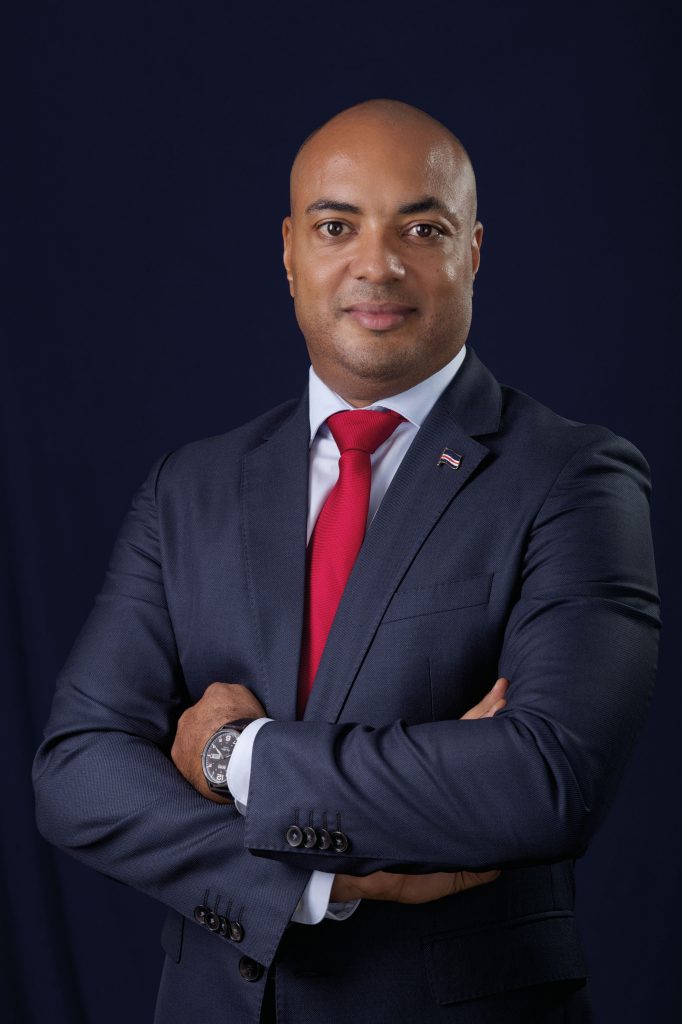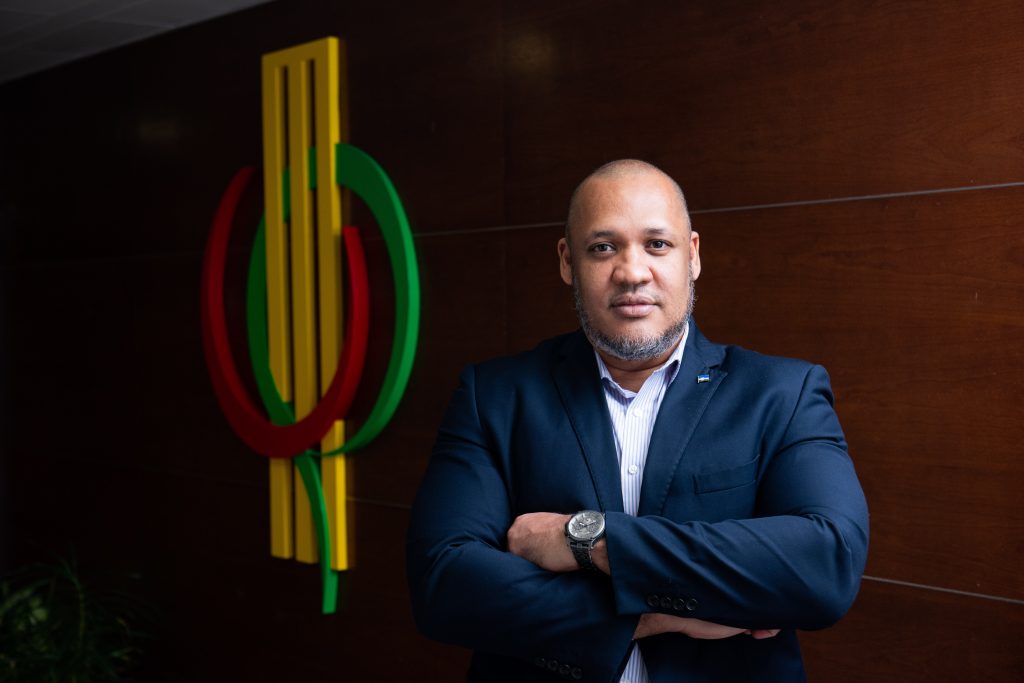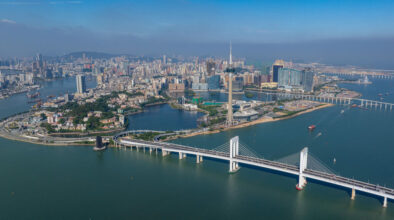Cabo Verde is diversifying its economy by setting up three Special Economic Zones – one for maritime, one for IT and one for science – and China could be at the heart of the African country’s major investments. We speak to some of the key figures behind these projects.
Cabo Verde is one of Africa’s most recent success stories. Due to the Portuguese-speaking country’s booming tourism and services industry, its annual gross domestic product (GDP) – the monetary value of all its goods and services – more than tripled between 2002 and 2018, according to World Bank data. And, up until the recent COVID-19 pandemic that has hit GDPs across the globe, there has been little sign of this archipelago, which lies off the coast of Senegal in northwest Africa, slowing down in its economic success story.
With no oil, gas or other natural resources to hand, Cabo Verde, which is home to almost 550,000 people, has made political stability and good governance its key resource over the past 20 years. This top-down approach coupled with precise planning from the authorities means that today, the nation is up there with some of the top-ranking African countries for both the health and education sectors, according to UN sources. Combined with its ever-growing GDP thanks to its tourism and services industries, Cabo Verde has a bright future ahead of it.
But, of course, this year’s pandemic is no small matter. Cabo Verde’s economy is reliant on tourism for both financial income and employment. So fewer tourists visiting its shores since its first COVID-19 case on 20 March – a foreigner from the UK – means that the economy, for the first time in two decades, is hardly a success story right now. There were around 10,000 active COVID-19 cases as we went to print – with just over 100 deaths since March – and many countries were warning travellers not to fly to the islands which themselves are under certain restrictions like early closing hours for restaurants and bars.
Whenever the pandemic is over, surely Cabo Verde’s economy will be on the up again. However, it has outlined one serious challenge that’s not unlike Macao’s own situation: it needs to broaden its economic base and not just rely on tourism for income. Previous calls for this action have been made and previous efforts have been undertaken but the need for economic diversification is now more urgent than ever. Cue the Special Economic Zones – Chinese-inspired local economic growth models which have been on the cards in Cabo Verde for years but are now on the verge of being rolled out to indeed diversify this beautiful country’s economy.
It is hard to be in the world economy and not to have China as a partner – but it has to be under conditions that are also in Cabo Verde’s interest.
– Paulo Veiga
Special treatment
The authorities in Cabo Verde have high hopes for the Special Economic Zones (SEZs). These are areas in a country that are subject to different economic regulations than other regions within the same country. The zones’ economic regulations tend to be conducive to – and attract – foreign direct investment, which is basically any investment made by a firm in one country into business interests located in another country. There can be a range of economic advantages for the foreign firm or country, including tax incentives and the chance to pay lower tariffs. SEZs, which first appeared in the late 1950s in industrialised countries, are usually created to facilitate rapid economic growth – including creating jobs, boosting exports, diversifying the economy and building productive capacity – and, in recent years, China has probably been the most successful country for setting up the zones to attract foreign capital. The first four SEZs in China were created in 1979 in Shenzhen, Zhuhai and Shantou in Guangdong province, and in Xiamen in Fujian province.

One Cabo Verde leader who harbours high hopes with the creation of the African country’s SEZs – of which there are set to be three in total – is its minister of maritime economy, Paulo Veiga. While his colleagues mostly work in the country’s capital city of Praia, he is based in the city of Mindelo on São Vicente Island. During the steamboat era, which started in the 1800s, Mindelo’s natural harbour – Porto Grande Bay – was one of West Africa’s most important and the city became the country’s cultural centre. In fact, many of the archipelago’s traditional songs – melancholic ‘mornas’ and playful ‘coladeras’ – were first played in Mindelo’s often bustling seaside bars. Today, however, the economic importance of the country’s second largest city has been somewhat lost to Praia and also to the major tourist hub of Sal Island. But a new project which will see an ‘SEZ for the Maritime Economy’ based across São Vicente Island – meaning principally Mindelo and its harbour – aims to restore its past prosperity.
“We know that Cabo Verde is in a strategic position for the maritime economy and sea traffic,” says Veiga, who adds that the new SEZ, which focuses on shipping, trading, fishing, shipbuilding and other marine activities, aims to ‘integrate the traffic in our region’ while the whole island of São Vicente ‘becomes a logistics hub for trade with the three continents around us’, which are Africa, Europe and South America. Cabo Verde’s government approved the general SEZ legislation in March and the next phase, already ongoing, is to create an authority that will run the project. The members of the board will soon be named and tasked with implementing the SEZs plan over three phases in the coming years.
It’s already taken much work to get to this point. Veiga says that China has been a key partner in the planning stages of the São Vicente SEZ project because it has created more SEZs than any other country in the world and ‘has had more success’ in terms of using them for its own industrial and economic growth. During the planning phase for the São Vicente SEZ, a team of around 20 experts from Cabo Verde partnered with a team of Chinese SEZ experts and visited some of the existing SEZ trading hubs in China. These visits helped the Cabo Verde team to develop a masterplan which was ready to go to public consultation in March. But then COVID-19 happened and the plan is yet to be presented to the public.
Once the team has been picked and announced, Veiga foresees the São Vicente SEZ authority going into full speed early next year. One of the first tasks will be to organise an international roadshow for investors and another will be to launch international tenders for infrastructure to be built under public-private partnerships in São Vicente’s port area. Projects will include a cruise terminal, a shipyard for building and repairs, a fishing dock and a new industrial zone, as well as associated infrastructure works like roads. Veiga says that if there are major partners ‘who want to have a container terminal or a fishing dock’, Cabo Verde can grant exploration rights to these companies, helping investors to ‘build and explore’ the logistics facilities.
Veiga notes that investors from Europe and Asia have already shown interest in projects within the new SEZ. He says that some Chinese companies have ‘expressed interest and visited the site’. The government used some international business forums last year – in Europe, the US and Cabo Verde – to increase awareness about the São Vicente project. Veiga says at these forums there was ‘a lot of interest and companies wanting to be part’ of the SEZ when it officially launches following public consultation. Of course, he recognises ‘the uncertainties related to the pandemic’ will now make planning more difficult but he nevertheless expects the project to be ‘a success’ as São Vicente offers a unique combination of strategic location and proximity to major international maritime routes in a politically stable area. “This SEZ did not happen by chance,” he says. “It happened because major players across the world expressed an interest to invest here and transform the country in a logistics hub.”
Catching China’s eye
The maritime SEZ project has been on the cards for a few years. It was first presented to the Chinese government by Cabo Verde Prime Minister José Ulisses de Pina Correia e Silva during Forum Macao’s 2016 Ministerial Conference. The following year, during a two-day visit to São Vicente, Chinese foreign minister Wang Yi declared his country’s willingness to co-operate in the development of SEZs. According to a China Ministry for Foreign Affairs transcript from Wang Yi’s 2017 talks in Cabo Verde, his counterpart Luís Filipe Tavares said, at the time, that his country ‘especially hopes’ to become China’s ‘strategic co-operative partner’ when it comes to its maritime economy. He said this was a priority for his government and also highlighted a desire to integrate the São Vicente SEZ into China’s Belt and Road Initiative, a Beijing plan to boost its role in international trade routes by financing infrastructure investments in countries across the world. Wang Yi said that Cabo Verde ‘is a natural extension of the Belt and Road Initiative, especially the Maritime Silk Road’ and welcomed the country’s willingness to actively participate in the initiative.
Veiga is confident that Chinese investors will come to São Vicente and that the island could receive, over time, large-scale infrastructure investments connected with the Belt and Road Initiative. “We think the conditions are in place for Chinese companies to invest in the SEZ,” he says. “It is hard to be in the world economy and not to have China as a partner – but it has to be under conditions that are also in Cabo Verde’s interest.”
There’s no doubt about it: the global tourism industry has been hit hard this year. And its recovery is intimately dependent on how the pandemic evolves over the coming days, weeks, months and even years. With this in mind, Veiga says that SEZs are ‘more important and urgent’ than ever. “Our economy is very dependent on tourism,” he says, “and the forecast for this sector is that it will remain constrained over the next two to three years.” He underlines that Cabo Verde’s government ‘has made a bet on the maritime economy’ in order to diversify. “Diversification is always a cultural change,” he says, “and we have to do it as soon as possible and have an economy which is more resilient to external impacts and changes that are taking place in the world.”
While the São Vicente SEZ will be the first and most important of its kind, it’s not the only one that’s planned in Cabo Verde. The SEZ legislation that was approved in March foresees the creation of two others: one on Cabo Verde’s largest island, Santiago, which will be dedicated to information and communication technologies, and another on the island of Fogo. This SEZ will be dedicated to science – specifically volcano research, which is handy as there’s an active volcano in the middle of Fogo. Both SEZs are set to be exciting projects that should start over the next couple of years but the São Vicente initiative is providing the trailblazing role before these other two can learn from it and be created more swiftly and efficiently.
Tapping into the GBA

Cabo Verde might be small in size but it’s always been big on ambition. And, fortunately, it’s surrounded by plenty of sea. So it’s only logical that much of the country’s development strategy concerns the oceans. Nuno Furtado, the country’s permanent representative to Forum Macao – officially the Forum for Economic and Trade Co-operation between China and the Portuguese-speaking Countries – underlines the size of Cabo Verde’s ‘Exclusive Economic Zone’ (EEZ), which is the ‘sea zone’ around a country that carries special rights for that country regarding the exploration and use of marine resources. Furtado says that Cabo Verde’s EEZ is around 800,000 square kilometres in size, which is the biggest EEZ in West Africa.
Furtado says that Cabo Verde’s SEZs are ‘without doubt strategic’ and ‘for the development of the country’. He says that the country’s ‘strategic location’ in the Atlantic Ocean is a ‘determining factor’ for potential investors. He adds that the maritime activities that are earmarked for the São Vicente zone will be ‘attractive to Chinese companies that have a high level of experience of SEZs’. He also confirms that ‘there is interest’ already in the maritime SEZ from specific companies, although he doesn’t reveal any further details.
Cabo Verde’s objectives with its SEZs aren’t a million miles away from China’s objectives with the Guangdong-Hong Kong-Macao Greater Bay Area (GBA) project. The GBA, which consists of nine Chinese cities alongside Macao and Hong Kong, aims to deepen co-operation between the 11 locations, facilitate in-depth integration across the region and promote co-ordinated regional economic development, resulting in an international first-class bay area that’s ideal for living, working and visiting. Both the GBA project and Cabo Verde’s SEZs are well underway. Furtado says that there are SEZs in the GBA that could interlink with the São Vicente project ‘with a view to creating an international logistics and maritime platform’. He says the Cabo Verde authorities ‘will identify large companies’ in the GBA and then aim to ‘promote investment opportunities’ to them.
“China is a strategic partner for us,” concludes Furtado, adding that by ‘taking advantage of the Macao platform in its relationship between China and the Portuguese-speaking countries’, Cabo Verde’s Macao Forum delegation will be in a good position to meet and potentially take part in attracting Chinese investors to the country’s SEZs. To this end, expect much more dialogue over the coming months between the African country and China in relation to the three proposed SEZs. Pandemic or not, Cabo Verde is on the road to economic diversification and further growth and China could be there every step of the way along this journey.

Macao at the forefront
Local firm Bringbuys is becoming a key player in Cabo Verde’s IT and tech SEZ
Much focus is being placed on Cabo Verde’s ‘Special Economic Zone for the Maritime Economy’ as it’s the country’s first and so far most developed SEZ on paper. However, two more SEZs are in the pipeline – and the one on Santiago Island, which will be dedicated to IT and communication, has been attracting interest from Macao over the past couple of years. This SEZ could see Cabo Verde turned into an IT and technology hub – which could serve many places in West Africa – and Macao’s Bringbuys Web Technology company could be at the forefront of the ambitious project.
In 2018, trade and investment promotion organisation Cabo Verde TradeInvest met with the Bringbuys team in China to discuss the creation of the technology hub which would include a cloud computing centre, an offshore data centre, training institutes and company incubators. Also in 2018 in Lisbon, a deal to create the tech hub was signed by the Macao firm and TradeInvest, which has said that the project involves an investment of between US$20 million (MOP 160 million) and US$40 million (MOP 320 million).
Bringbuys is a technology startup founded by Macao entrepreneur Vincent Zhou. It was one of the first projects to be based at the Inno Valley HQ in the Hengqin Free Trade Area for startups from Guangdong, Hong Kong and Macao. The company’s technology hub project in Cabo Verde is being rolled out over the next few years. Zhou says that Cabo Verde is an ‘attractive country for investors’, praising the authorities’ flexibility and efforts to help develop Bringbuys’ business as well as its own companies and SEZs. Zhou says that his company is working hand-in-hand with Cabo Verde’s government in both drafting a business plan for its part in creating the tech hub and in lending its expertise to the creation of the IT SEZ. He says he sees ‘a high possibility for major IT investments to happen in Cabo Verde’ because of its government’s ‘efforts and support’. He also says that it’s now ‘necessary to attract other major IT companies’ to invest in this SEZ in Cabo Verde.
The model city
Shenzhen’s rise from fishing village to ‘model’ Special Economic Zone has been praised by China’s President
On the subject of SEZs, one city not too far from the shores of Macao was praised by the Chinese President on 14 October. Xi Jinping travelled to Shenzhen to mark the 40th anniversary of the establishment of the Shenzhen Special Economic Zone, which has been hailed as a model for development and boosting international trade.
According to the President, Shenzhen’s GDP was RMB 270 million when its SEZ was created in 1980. At an annual growth rate of 20.7 per cent, it reached RMB 2.7 trillion (US$400 billion) last year. The SEZ’s total imports and exports climbed from RMB 119 million in 1980 to RMB 2.85 trillion (US$431.5 billion) last year, an average annual growth rate of 26.1 per cent. Shenzhen is home to leading tech companies such as telecoms giant Huawei and technology conglomerate Tencent.
Pointing to the valuable experience from the development of SEZs in China, including Shenzhen, Xi highlighted several key success factors, including making the rule of law an important guarantee through strict law enforcement, judicial impartiality and universal law-abiding. The Chinese President hailed Shenzhen as an ‘engine’ for the development of the GBA.



